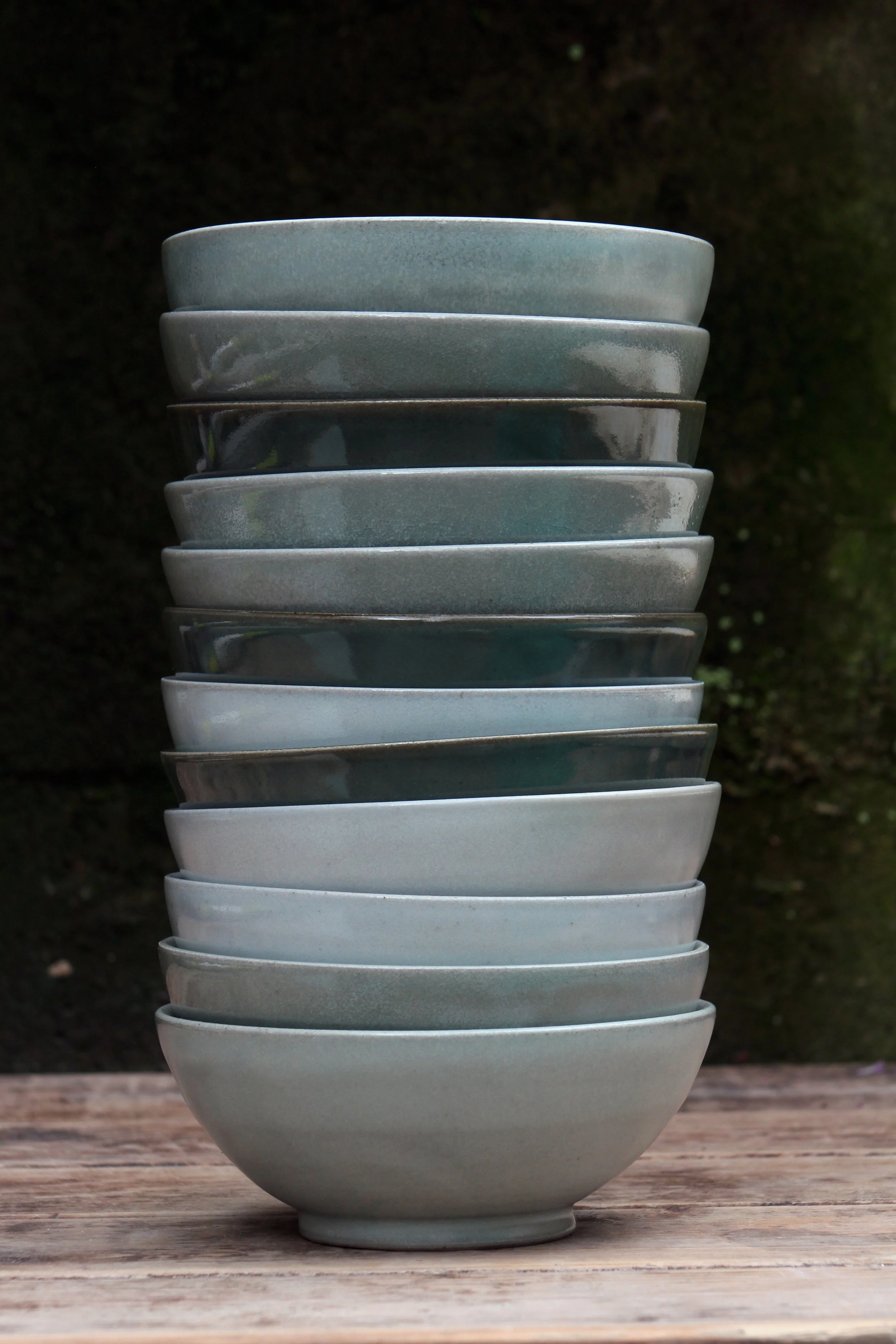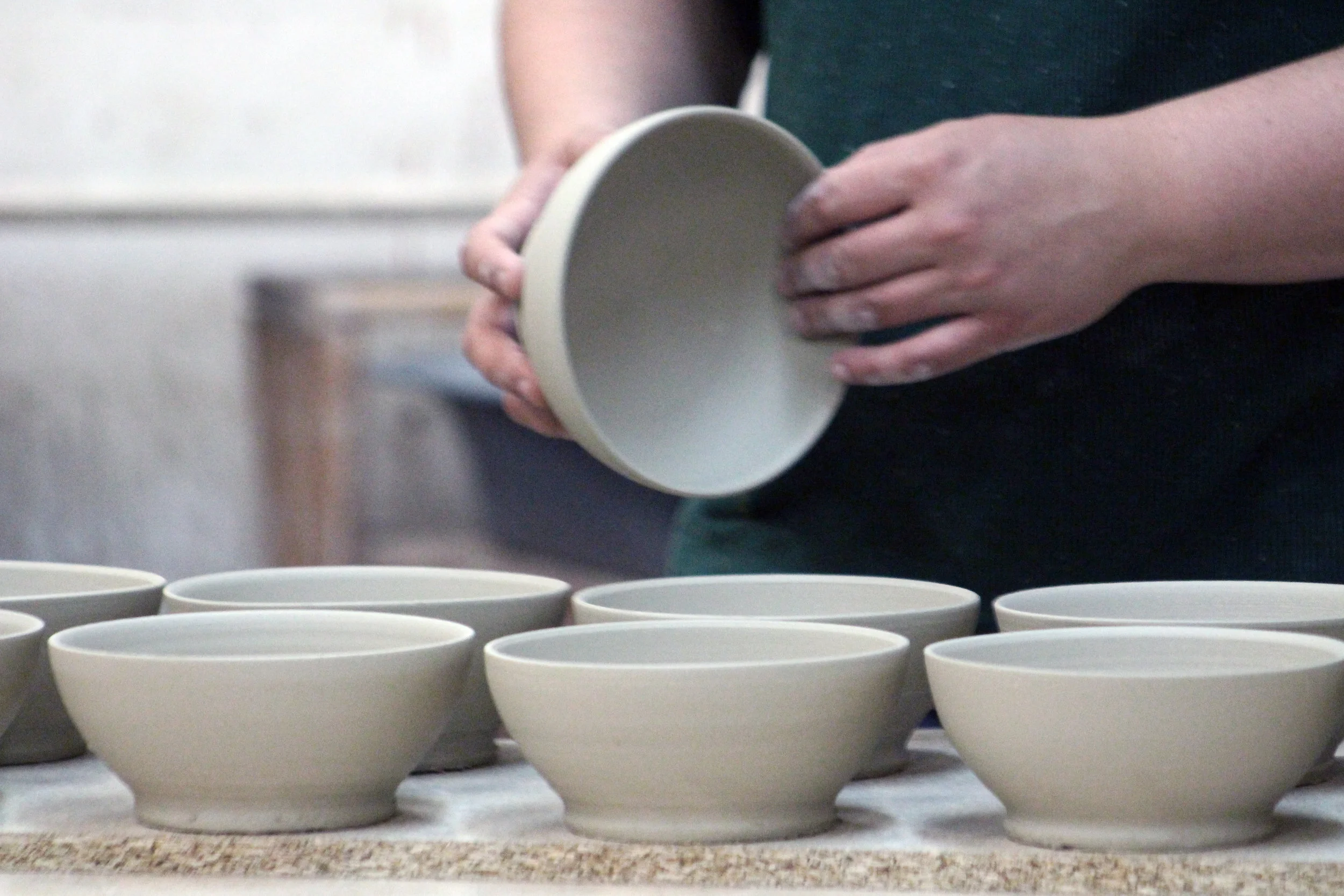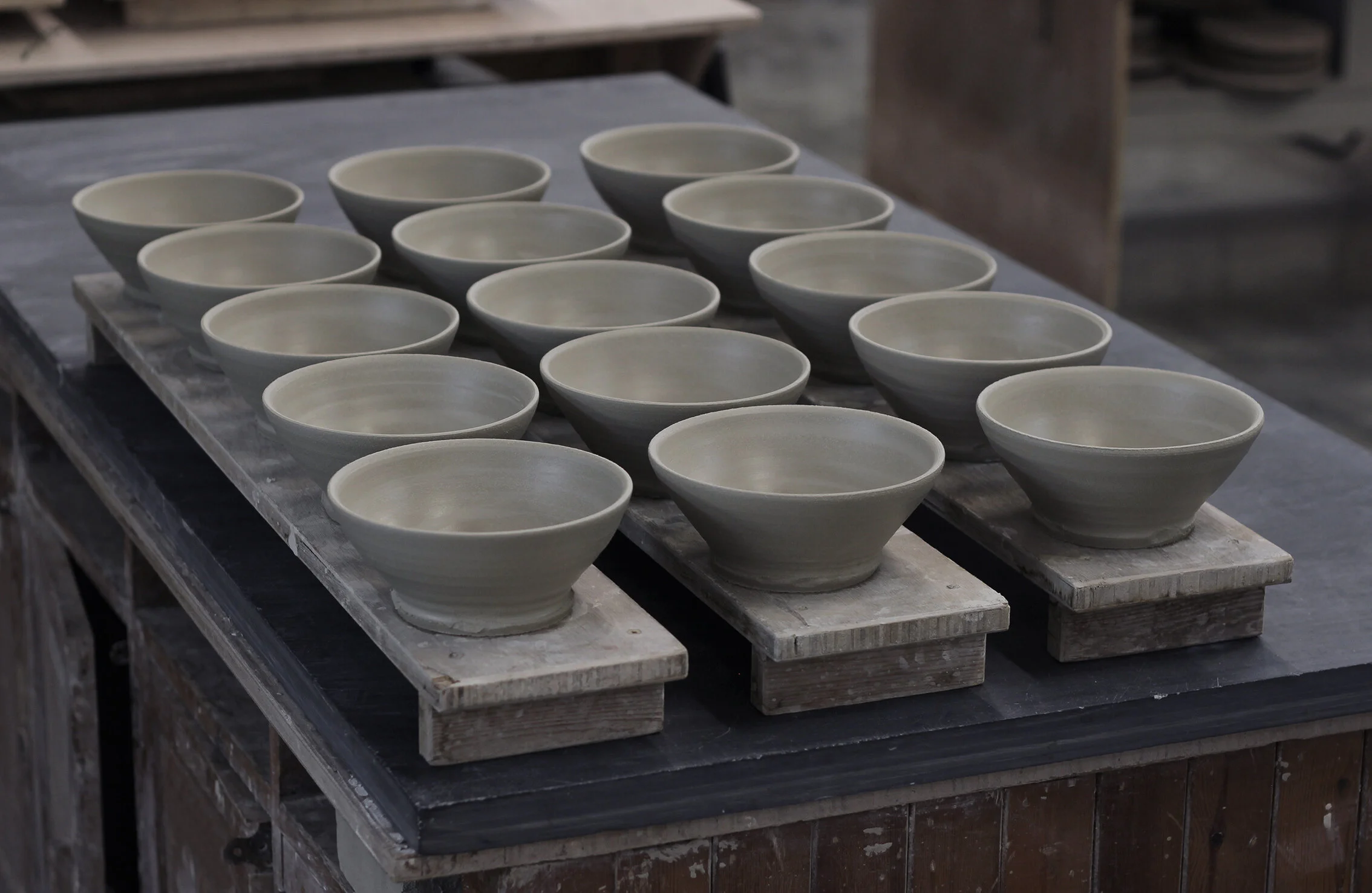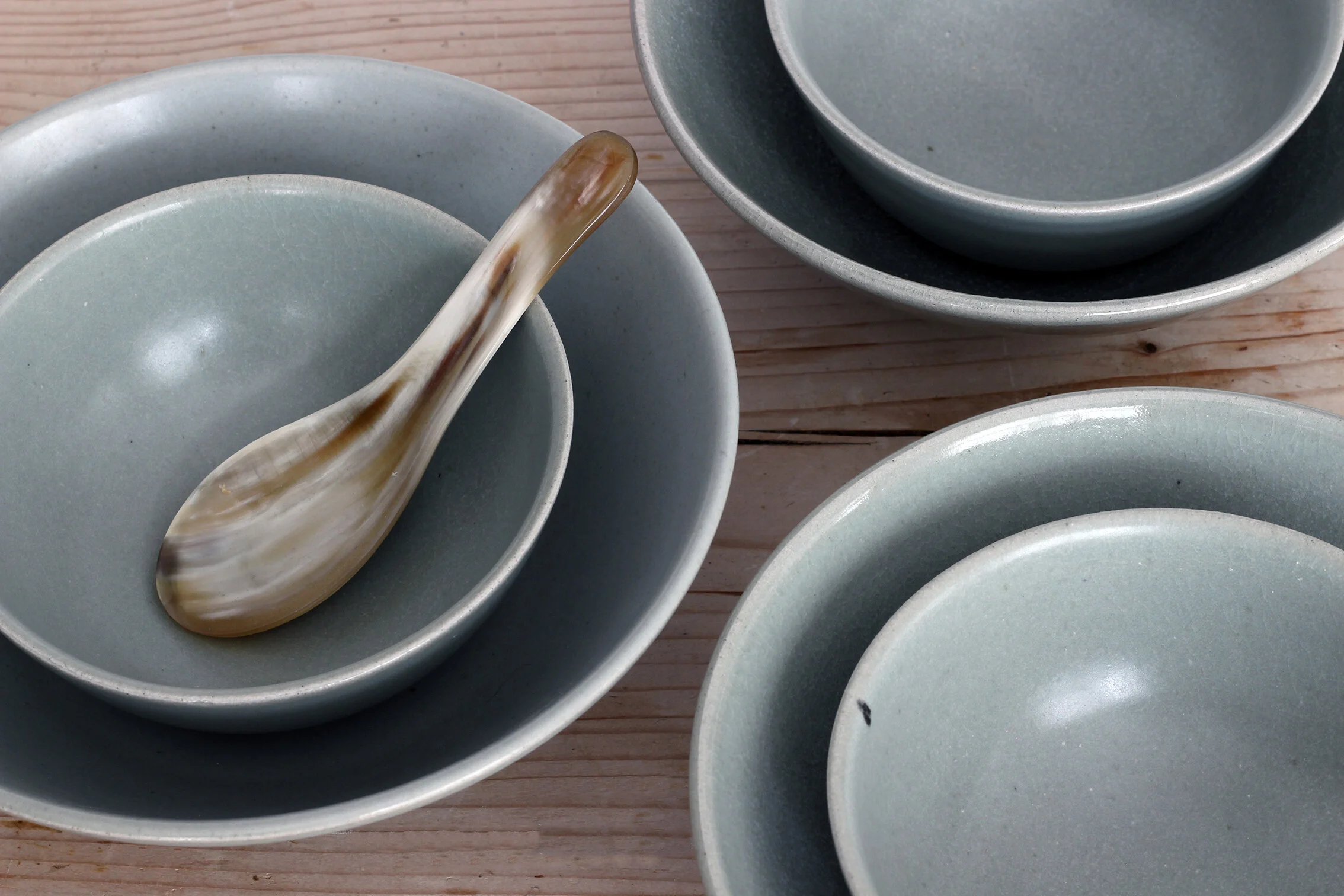Bowls
All the bowl forms I was taught to make throughout my apprenticeship were generally thickly thrown. The reasons being that, they would later be faceted and slipped/glazed as the firing process was raw for the soda kilns, this is were slips, shino’s & glazes would be applied to the pots while they were still greenware. So if the pots were too thin they would generally warp or split during the process. This is avoidable but we often poured and dipped to get a better even finish so the wet pots were taking on a huge amount of water and becoming incredible soft before firming up again and drying out for firing.
After finishing my apprenticeship, I planned the exact opposite, beautifully thin and elegant was the aim. But this didn’t sit well with me, I’m not a small delicate person and I love to use and experience all the pots I have collected over the years. Unfortunately, all the finely thin bowls I have bought are now chipped or broken beyond repair. Not purely because I’m clumsy but more to the fact they get used several times a day, spoons bouncing into the pots at breakfast and piles of dishes crashing into the sink to be washed at tea (dinner) time. I want to use pots care free and enjoy them for what they are, so I avoid the fine delicate forms and thin rims, as beautiful as they are and as well crafted they look, it just didn’t suit me. When making pots I look to craft something I would be happy to use, happy to live with. A thick pot needn’t be a heavy one, its all about the balance throughout the form.
I make bowls in the simplest, energy efficient way. First finding the base and creating the rounded interior leaving enough there to consider the foot ring when turning, before lifting the walls to form a conical shape thrown up to a marker. I then use a particular throwing rib to push the walls down and into shape. The whole process taking a couple of minutes but with the need to mention several years of practice. After turning the exterior shape and exposing the foot ring I use a tool to apply linear marks to the outside. Although simple and often hidden under the glaze, sometimes this kind of decoration can just break up the form a little and help draw in the eye to subtle detail. Also I’m a terrible decorator.





